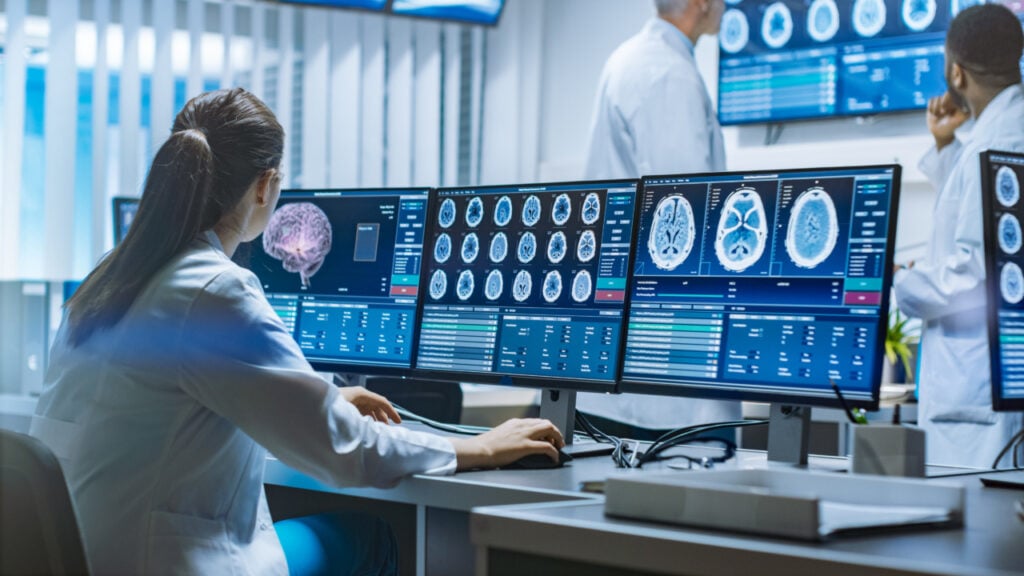Picture this: a surgeon in the operating room needs vital patient information instantly, or a nurse monitoring a patient’s recovery relies on accurate data updates from multiple devices. These moments demand precision, speed, and reliability, and that’s where medical computers step in.
Medical computers are revolutionizing patient care. These cutting-edge devices, tailored specifically for healthcare settings, are not just another screen—they’re the bridge between technology and life-saving care. This blog will explore how medical computers enhance patient outcomes, streamline workflows, and improve overall efficiency in healthcare environments.
Why Medical Computers Are Essential in Healthcare
Healthcare is a field where milliseconds matter. From diagnosing patients to tracking their recovery, technology plays an integral role. But not all computers are created equal. Medical computers are purpose-built for clinical environments, offering unique features that standard office devices simply can’t match.
Here’s why medical professionals and hospital administrators are turning to medical computers:
- Hygienic Designs: Many medical computers are built to withstand rigorous cleaning and sanitization protocols, essential in infection-prone environments.
- Reliability Under Pressure: Even during power surges or unsteady connectivity, these computers are designed to operate smoothly.
- Tailored to Specific Needs: Unlike standard computers, medical-grade devices often come with touchscreen capabilities, antimicrobial casings, and enhanced compatibility with critical healthcare software.
Enhancing Patient Care Through Real-Time Access
One of the key benefits of medical computers is the ability to provide healthcare professionals with real-time access to critical patient data. Whether in intensive care units or outpatient facilities, instantaneous data retrieval can make all the difference.
Example 1: Bedside Access to Records
Imagine a nurse making her rounds, equipped with a mobile cart-enabled medical computer. Instead of relying on handwritten notes or running back and forth to nurses’ stations, she can instantly pull up a patient’s medical history, lab results, or imaging, ensuring the right decisions are made on the spot. This minimizes the risk of human error and ensures the treatment path is both accurate and efficient.
Example 2: Faster Diagnosis in Emergency Situations
For ER physicians, a medical computer integrated with diagnostic software enable them to view imaging results, lab reports, and patient vitals in real time. This accelerated access streamlines diagnosis and treatment, which is absolutely critical in emergencies.
Streamlining Workflows and Increasing Efficiency
Healthcare professionals often juggle multiple tasks under intense pressure. Medical computers help shoulder that burden by automating processes and optimizing workflow efficiency.
1. Seamless Integration with Medical Devices
Modern medical computers can directly interface with diagnostic tools such as EKG machines, infusion pumps, and patient monitors. Instead of manually uploading data between devices, these integrations allow real-time updates, saving valuable time for the healthcare staff. This automated data flow also reduces the risk of transcription errors, keeping patient data accurate and reliable.
2. Remote Patient Monitoring
Telemedicine has surged in popularity over the last few years, and medical computers are central to its delivery. By securely managing remote patient data, these devices allow doctors to consult with patients through video calls while accessing their medical histories with ease. This innovation has been indispensable for managing chronic conditions remotely and improving care for patients in rural areas.
3. Data-Driven Decision Making
Medical computers can analyze vast volumes of data during clinical trials, research projects, or inventory management. Their computing capabilities allow for predictions and insights to be generated quickly, empowering hospital administrators to make informed decisions, whether it’s staffing adjustments or procurement planning.
A Safer and More Hygienic Option
Hospitals need devices that can withstand rigorous cleaning procedures. Medical computers are designed with this necessity in mind. Unlike standard PCs:
- They feature sealed designs to prevent the buildup of infectious particles in crevices.
- Many are equipped with antimicrobial coatings, further reducing the risk of contamination.
- They’re built to comply with healthcare industry standards, including IP-rated dust and water resistance.
This makes medical computers a safer option in settings where reducing the spread of pathogens is a top priority.
Breaking Down Barriers in Communication
Good communication in healthcare isn’t just nice to have—it’s life-saving. Medical computers enhance collaboration between multidisciplinary teams, departments, and even different healthcare facilities. With the proper software installed, these devices facilitate seamless information sharing and enable smarter collaboration.
For example:
- A patient’s updated vitals can be shared instantly with specialists on another floor.
- Surgeons hundreds of miles apart can use a medical computer interface to share insights and perform robotic-assisted surgeries in real time.
These advances in communication directly translate to better patient outcomes because the right information gets to the right people at the right time.
Why Healthcare IT Managers and Administrators Choose Medical Computers
For IT managers and administrators, the benefits of medical computers extend beyond patient care. They’re concerned with compliance, security, and efficiency.
- Data Security: Equipped with built-in firewalls, encryption tools, and secure access features, medical computers safeguard patient information to meet stringent HIPAA and GDPR guidelines.
- Durability: These machines are built to last, reducing downtime and cutting replacement costs for IT managers juggling tight budgets.
- Ease of Maintenance: With hot-swappable batteries and durable designs, medical computers can stay operational during upgrades and regular software updates.
Where Are Medical Computers Heading?
The future of medical computers is thrilling. With the rise of AI and machine learning, these devices will become even smarter, analyzing trends in patient data, predicting outcomes, and possibly even suggesting treatments based on historical data patterns. These advancements will empower healthcare professionals like never before, opening doors to unprecedented levels of efficiency and patient care.
Take Patient Care to the Next Level
The integration of medical computers into healthcare settings isn’t just about keeping up with technology trends—it’s an investment in better patient care, optimized workflows, and a healthier bottom line.
If your healthcare facility hasn’t yet embraced medical-grade computing, now might be the right time. From bedside care to administrative planning, these devices are transforming the industry, one keystroke at a time.
Curious about incorporating medical computers into your practice? Stay informed about the latest models, features, and innovations to keep your facility ahead in this tech-driven era.
Caroline is doing her graduation in IT from the University of South California but keens to work as a freelance blogger. She loves to write on the latest information about IoT, technology, and business. She has innovative ideas and shares her experience with her readers.





![‘Anemone’ Review – Ronan Day-Lewis’ Debut Feature Is A Bold Visual Feast Anchored By Daniel Day-Lewis’ Tremendous Return [NYFF 2025] ‘Anemone’ Review – Ronan Day-Lewis’ Debut Feature Is A Bold Visual Feast Anchored By Daniel Day-Lewis’ Tremendous Return [NYFF 2025]](https://cdn.geekvibesnation.com/wp-media-folder-geek-vibes-nation/wp-content/uploads/2025/09/Anemone-Still-300x126.jpg)
